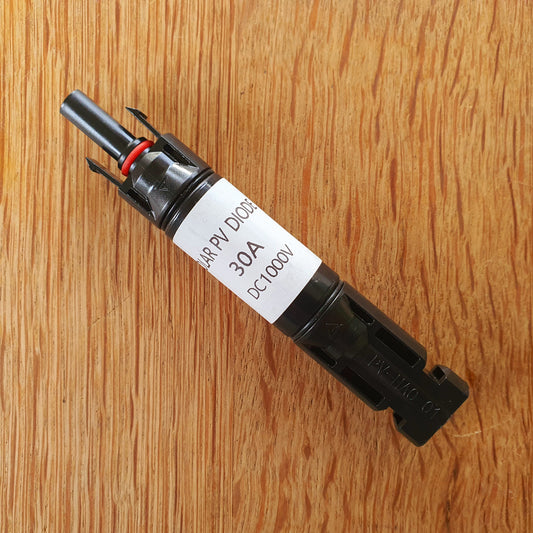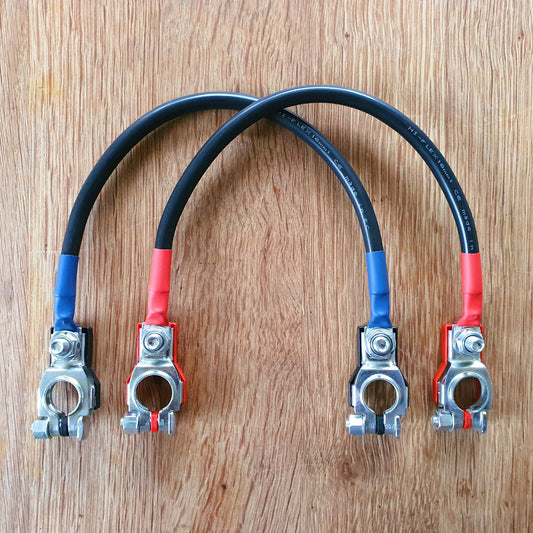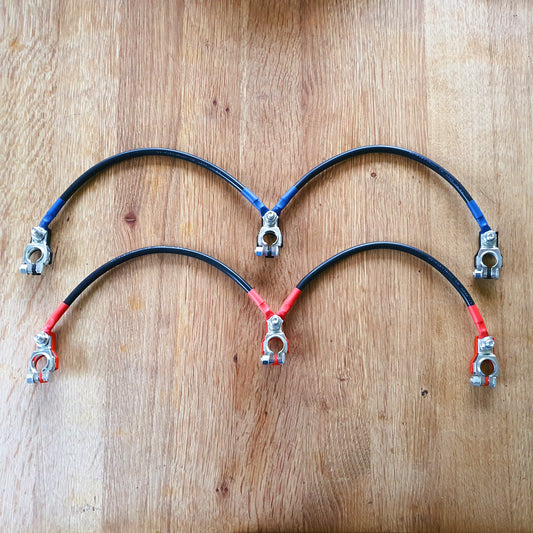
An Introduction to Off-Grid Solar Power
Share
Designing an off-grid solar system for the first time can be a daunting task, as is common with a lot of electrical work. Fortunately, solar power is one of the most accessible, cost-effective and intuitive forms of renewable energy that currently exists. It is also extremely reliable, which is undoubtably why it is so popular within the off-grid community. The factors that dictate good design are not overly complex either, so whether you are designing for a campervan, motorhome, RV, boat or outbuilding, this article aims to provide an introduction to off-grid solar power.

Ultimately, the aim of any off-grid system is to collect the free energy from our renewable sources and store it for later use at our convenience. In the case of our solar system, this is a matter of generating the electrical energy from our solar panel, regulating this energy through our solar charge controller, ready to store in our leisure battery as illustrated in the diagram above. In this regard, we first need to identify the components that are required to build a basic solar system, understand the factors that affect their performance, and how they all fit together.
Solar Panels
The great appeal of solar panels in off-grid renewable systems is just how easy they are to understand and operate. Exposing them to sunlight will generate electrical energy that is proportional to the size of the panel, its efficiency and the intensity of the light itself.
The power rating of a solar panel is always measured in watts and can give us a good estimate of how much electrical energy our renewable source is likely to produce, as well as the output that our off-grid system will need to handle. The power rating is given by the manufacturer, usually alongside the open circuit voltage and the short circuit current, that can be found printed on the back of the panel.
Solar panel efficiency is dictated by construction, where rigid monocrystalline panels are considered to be the most efficient, followed closely by the thin-film flexible panels which are about on par with the older generation of polycrystalline rigid panels. Solar efficiency is also dictated by the angle of the panel relative to the sun, which is worth noting if you intend to mount your panel flat on the roof of a campervan, motorhome, RV or boat.
Solar panels often come with special MC4 waterproof connectors, that are universal across the industry and make it much easier to connect the positive and negative wires of the panel to the correct place. You may also need some MC4 extension cables if your panel is far away from the rest of your system or a bare conductor to connect your solar charge controller, which you can find in the shop.
Charge Controllers
The solar charge controller is the brains of the system and is designed to intelligently convert the electrical energy from the solar panel into charge for the battery in a safe and efficient manner. Most charge controllers will come with an LCD screen where you can monitor the status of both your solar panel and your battery, with options to change any user settings with the inbuilt menu buttons.
Some of these setting include the type of battery you will be using including, AGM and SLA lead-acid chemistries, but it is worth noting that not all charge controllers support lithium chemistries. Other settings are automatic and most charge controllers will be able to detect whether you are using a 12v or 24v battery configuration. It is important to connect the battery to your charge controller before the solar panel as this will allow it to detect the battery voltage and configure itself on start up.
It is important to know the maximum voltage and current that the charge controller can handle so you can safely connect it to your solar panel. The manufacturer should give you this information which you can compare against the maximum open circuit voltage and maximum closed-circuit current of your solar panel to ensure it is operating within safe parameters. Make sure to turn your solar panel out of the sun when you connect it to the charge controller so as not to cause any sparking or damage. It is also possible to limit the maximum current of your solar panel with an inline fuse if required, which you can find in the shop.
Battery Storage
Batteries are where the electrical energy from our solar system is stored, and they are quite versatile in their applications, construction, and the way they can be arranged. For this article we are assuming the use of a single 12v battery for simplicity, but it is worth briefly noting that multiple batteries can be strung together for either a higher storage voltage or higher overall discharge capacity.
Lead-acid batteries are by far the most common type of storage medium used in off-grid applications and can come in a number of variants including but not limited to, SLA (Sealed Lead-Acid), AGM (Absorbent Glass Mat) and gel where they are all supported by a wide range of solar charge controllers and are considered very reliable. However, lead-acid batteries are a bit crude compared to their modern equivalents, including lithium-ion and lithium iron-phosphate which can store a lot more energy in a smaller area, with less weight and a longer life cycle, but are considerably more expensive.
For a static storage system, you will find that currently the cost-performance of both lead-acids and lithium chemistries are quite competitive with each other. In the case of more mobile applications, such as for recreational vehicles, it may make more sense however to use lithium if weight and fuel consumption are a concern and the upfront cost is not prohibitive. It is worth noting though, that lithium batteries are not as widely supported as their lead-acid equivalents, so be sure to check the specifications of your charge controller and other equipment before making any investments.
Leisure batteries are very standardised in the way they can be connected to external equipment like light fixtures, water pumps and mains inverters. This also makes the process of connecting your solar charge controller to your battery very simple, either via a battery terminal or threaded stud, the cables for which can both be found in the shop.



